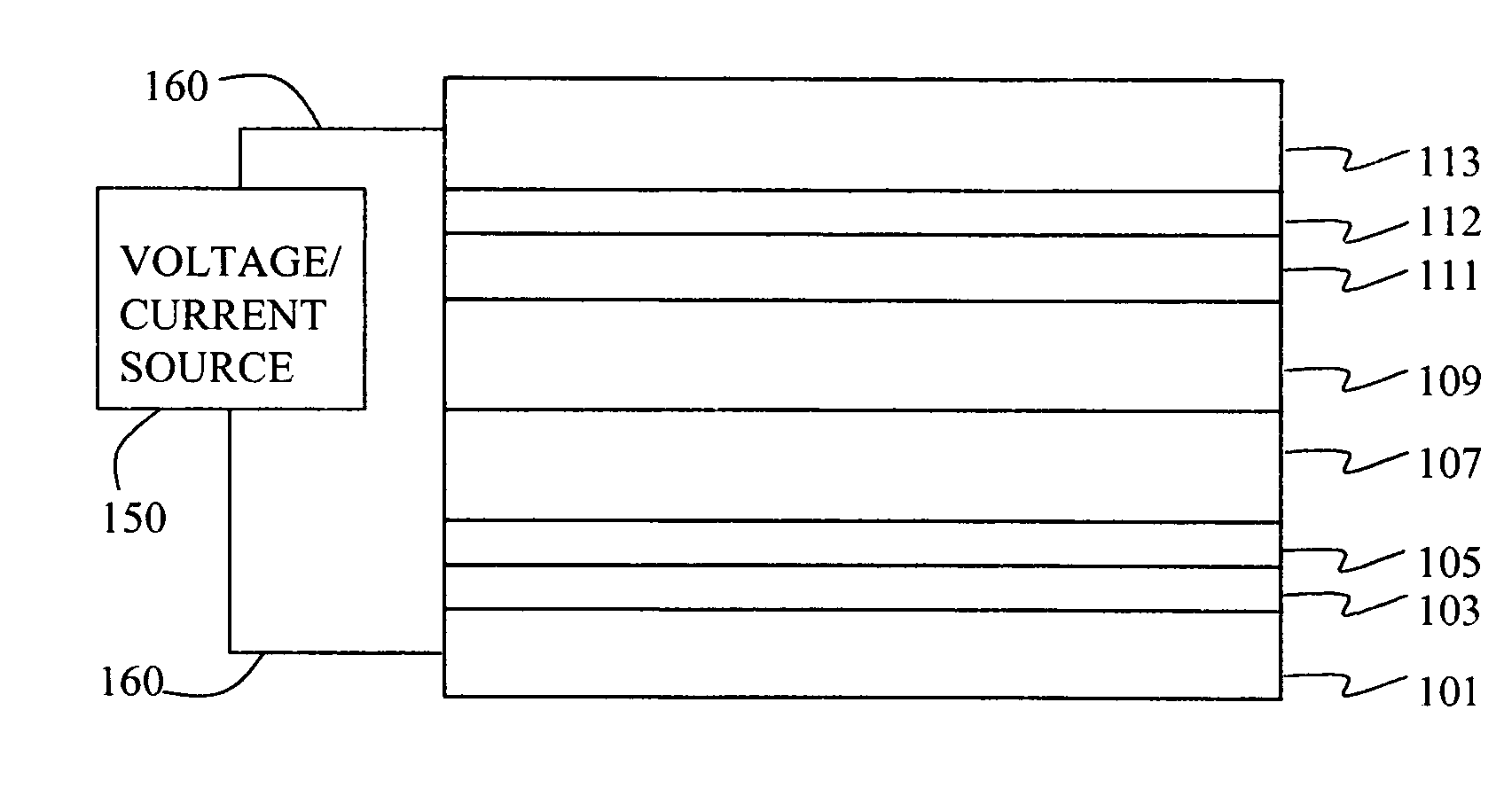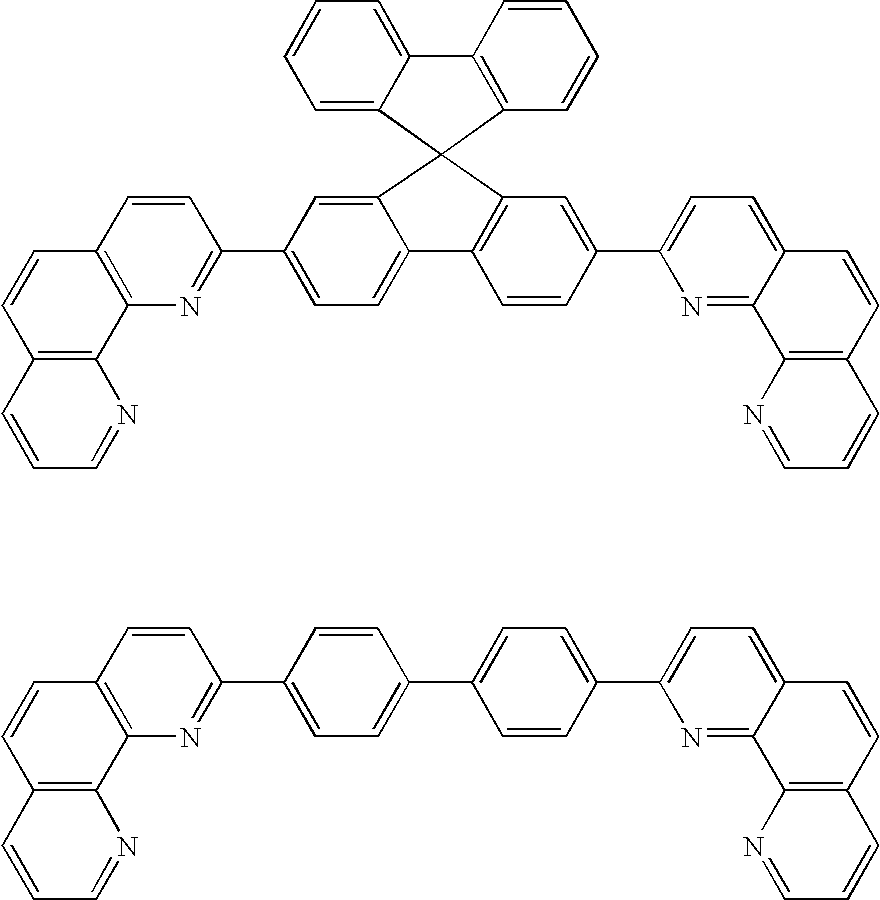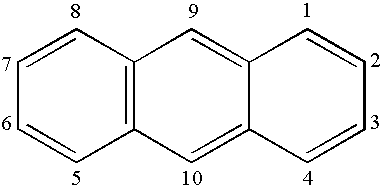Electroluminescent device containing an anthracene derivative
an anthracene derivative and electroluminescent device technology, applied in the direction of discharge tube luminescnet screens, natural mineral layered products, etc., can solve the problems of shortening the life of the device, affecting the application of many desirable applications, and limiting the performance of the device, etc., to achieve good device stability
- Summary
- Abstract
- Description
- Claims
- Application Information
AI Technical Summary
Benefits of technology
Problems solved by technology
Method used
Image
Examples
example 1
Synthesis of Inv-1 [2-(2-anthracenyl)-1,10-phenanthroline]
[0162] A mixture of 8-amino-7-quinolinecarbaldehyde (Int-C, Scheme I, 1.6 g, 9.1 mmol), 2-acetylanthracene (2.0 g, 9.1 mmol) and anhydrous ethanol (500 ml) was placed into a round-bottom flask under a nitrogen atmosphere. Saturated ethanolic potassium hydroxide (9.5 ml) was added dropwise. The mixture was then heated to reflux for 3 days, during which time a brown precipitate formed. The reaction was cooled to room temperature and the solid was collected by filtration and washed well with ethanol (100 ml) and hexanes (100 ml). Thin layer chromatography (Baker-flex® Aluminum Oxide IB-F) of the collected solid using methylene chloride as eluent showed the solid to be pure. The collected solid was sublimed twice at 265° C. to yield 2.7 g (83% yield) of orange solid, which was confirmed to be 2-(2-anthracenyl)-1,10-phenanthroline (Inv-1) by FD-Mass Spectrometry. FD-MS (m / z): 356.
example 2
Fabrication of Device 1-1, 1-2, and 1-3
[0163] Device 1-1, 1-2, and 1-3 were prepared in the following manner. A ˜1.1 mm thick glass substrate coated with a transparent ITO conductive layer was cleaned and dried using a commercial glass scrubber tool. The thickness of ITO is about 25 nm and the sheet resistance of the ITO is about 68 Ω / square. The ITO surface was subsequently treated with oxidative plasma to condition the surface as an anode. A layer of CFx, 1 nm thick, was deposited on the clean ITO surface by decomposing CHF3 gas in an RF plasma treatment chamber. The substrate was then transferred into a vacuum deposition chamber for deposition of all other layers on top of the substrate. The following layers were deposited in the following sequence by sublimation from heated boats under a vacuum of approximately 10−6 Torr:
[0164] a) a hole-transporting layer of either 75 nm or 95 nm (see Table 1) of N,N′-di(1-naphthyl)-N,N′-diphenyl-4,4′-diaminobiphenyl (NPB);
[0165] b) a 20 nm ...
PUM
| Property | Measurement | Unit |
|---|---|---|
| Time | aaaaa | aaaaa |
| Time | aaaaa | aaaaa |
| Time | aaaaa | aaaaa |
Abstract
Description
Claims
Application Information
 Login to View More
Login to View More - R&D
- Intellectual Property
- Life Sciences
- Materials
- Tech Scout
- Unparalleled Data Quality
- Higher Quality Content
- 60% Fewer Hallucinations
Browse by: Latest US Patents, China's latest patents, Technical Efficacy Thesaurus, Application Domain, Technology Topic, Popular Technical Reports.
© 2025 PatSnap. All rights reserved.Legal|Privacy policy|Modern Slavery Act Transparency Statement|Sitemap|About US| Contact US: help@patsnap.com



